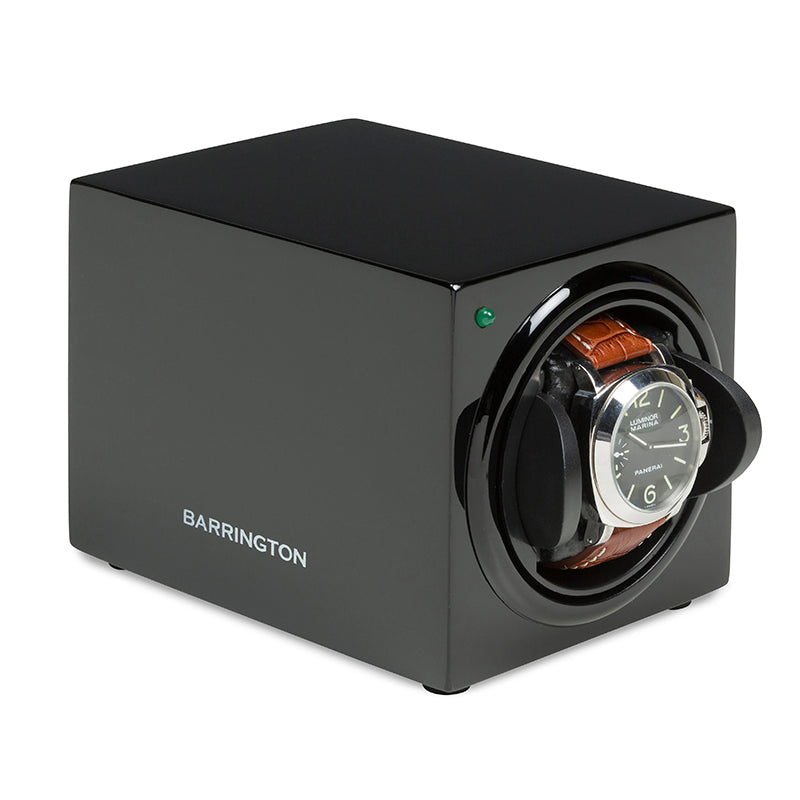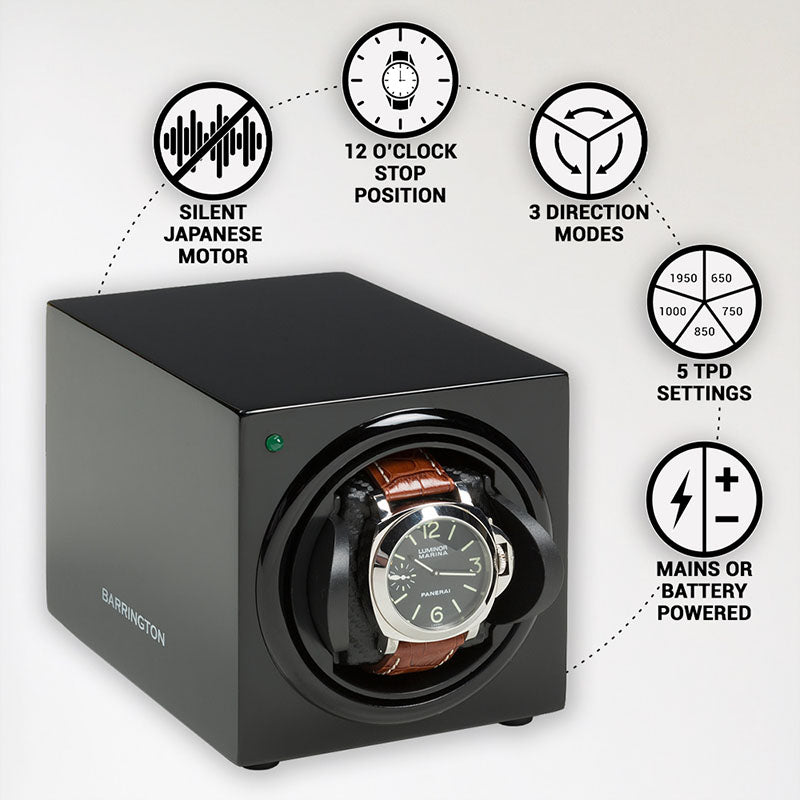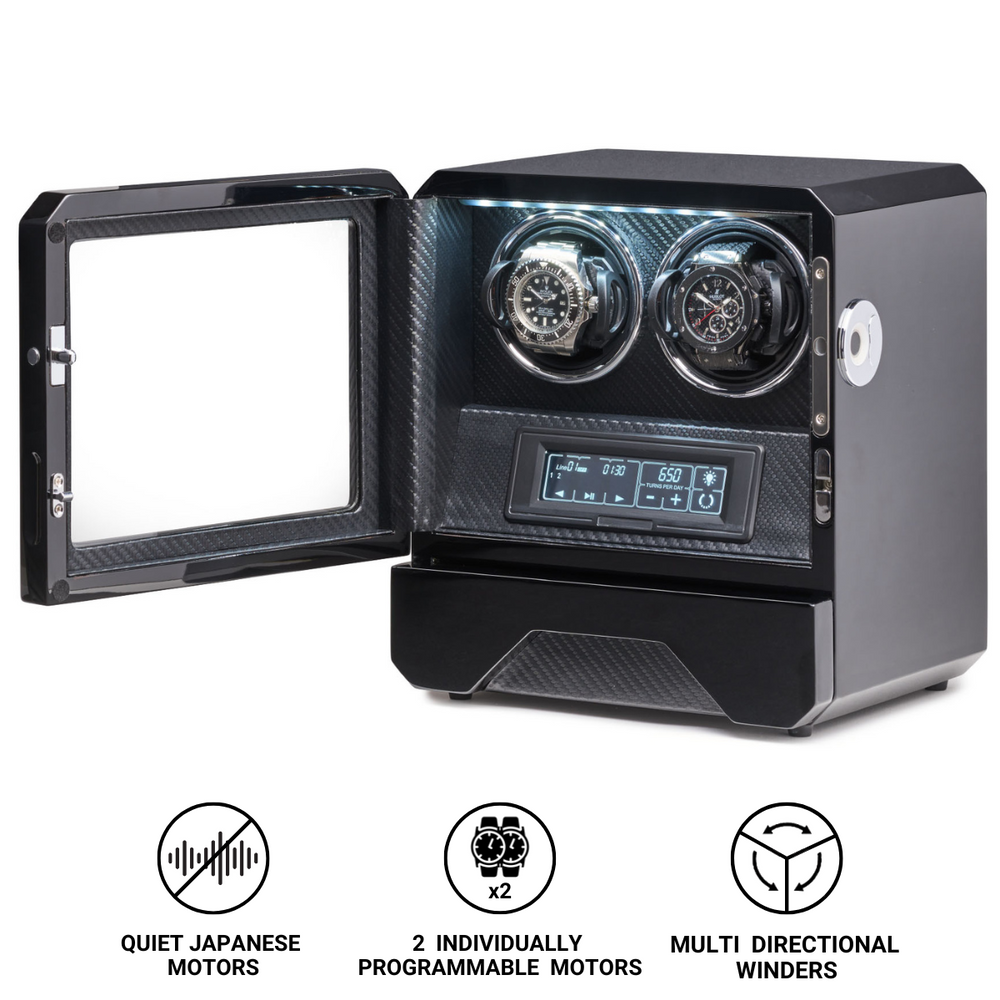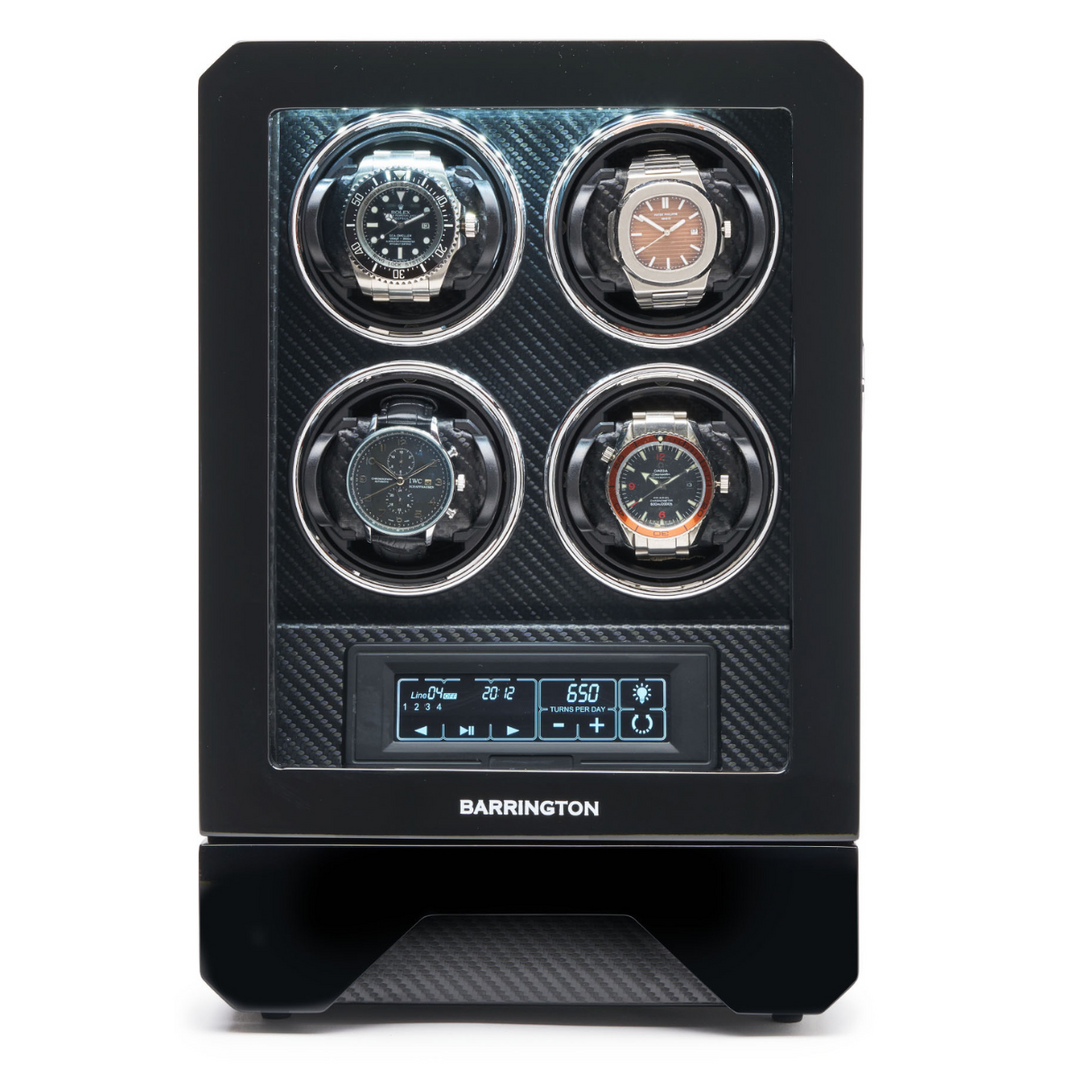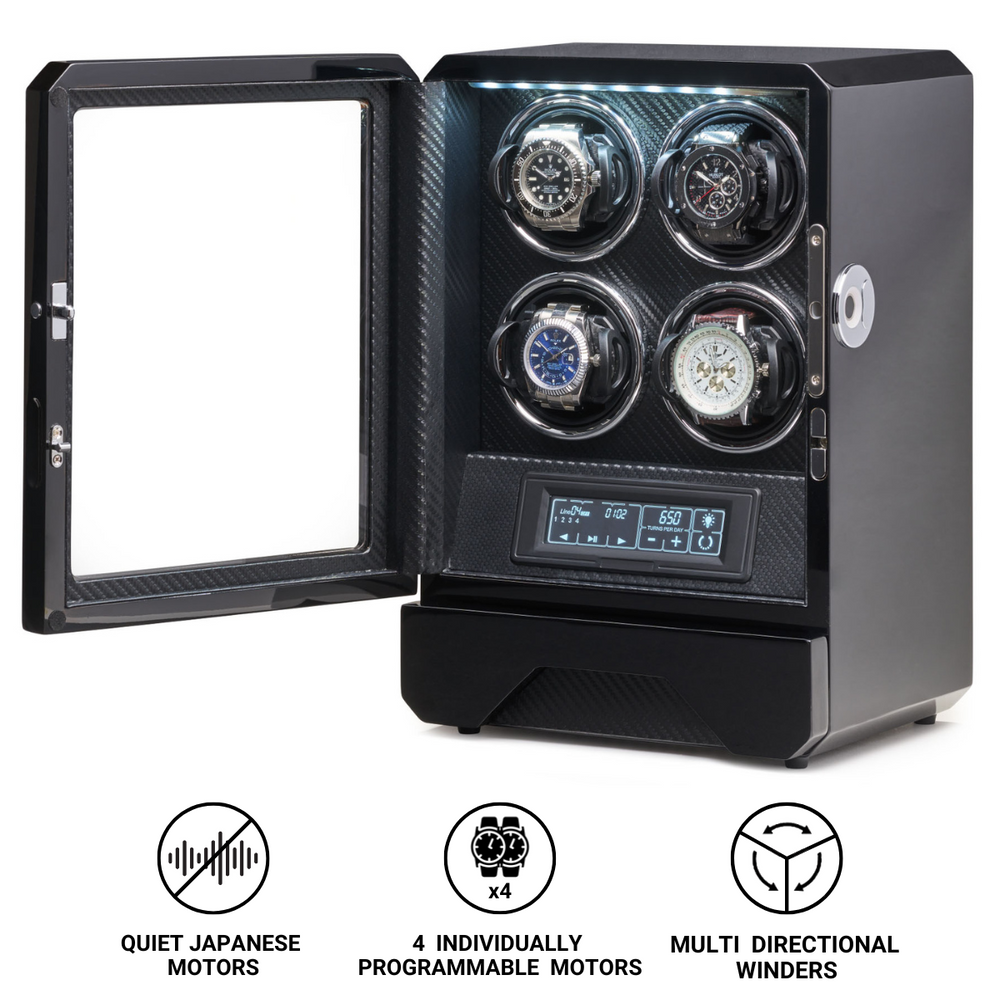What is Fixed Bezel?
In the language of horology, the term “bezel” refers to the ring surrounding the watch crystal, a functional and aesthetic element that defines much of a watch’s character. While many modern watches feature rotating or specialised bezels for timing or calculation, the fixed bezel represents simplicity and permanence. It is the most traditional and fundamental form of the bezel, serving as a protective frame and stylistic anchor for the watch face.
A fixed bezel is, by definition, non-rotating. It does not turn to measure elapsed time or perform any mechanical function beyond safeguarding the crystal and completing the case architecture. Yet despite its apparent simplicity, the fixed bezel plays an essential role in both the durability and design identity of a timepiece.
From the earliest pocket watches to the most refined modern dress watches, the fixed bezel has remained a core feature. Its restrained nature allows the dial to take centre stage while adding visual balance and a sense of cohesion to the watch as a whole.
The Function and Purpose of the Fixed Bezel
At its most basic level, the fixed bezel serves as a structural component of the watch case. It secures the crystal in place, protecting the dial and hands beneath from dust, moisture, and impact. In mechanical watches, where precision and reliability depend on environmental stability, this function is critical.
The fixed bezel also acts as the first line of defence against physical damage. By slightly extending above the crystal, it absorbs the majority of surface impacts that might otherwise shatter or scratch the glass. This is particularly important in sports and military watches, where durability is a defining feature.
Beyond protection, the fixed bezel defines the visual boundaries of the watch face. It frames the dial, providing contrast and depth. The width, height, and finish of the bezel influence how large or small the dial appears, how light reflects across the case, and how the watch sits on the wrist.
While the fixed bezel lacks the moving functionality of rotating designs found on dive or pilot watches, its simplicity offers advantages of its own. It eliminates potential mechanical weaknesses, such as the wear and misalignment that can occur with movable parts, and ensures long-term stability.
In essence, the fixed bezel embodies the principle of restraint: doing one thing perfectly rather than attempting many.
The History of the Fixed Bezel
The history of the fixed bezel stretches back to the earliest days of watchmaking. In pocket watches of the 17th and 18th centuries, the bezel was an essential part of the case structure, securing the protective crystal or hinged cover. These early bezels were typically made of precious metals such as gold or silver and often engraved or decorated to complement the artistry of the dial.
When wristwatches became popular in the early 20th century, the fixed bezel carried over from pocket watch design. Early wristwatches were intended primarily for formal wear and precise timekeeping, not for specialised functions. Their bezels were elegantly minimal, polished smooth or lightly stepped to provide visual interest without distraction.
During the mid-20th century, as wristwatches became tools for professionals, new types of functional bezels appeared. Rotating bezels were developed for divers, pilots, and scientists, allowing users to measure time intervals or perform navigational calculations. Yet, even in this era of technical innovation, the fixed bezel remained an important element in many watch categories.
Field watches, dress watches, and chronometers continued to rely on the fixed bezel for its understated strength and classic appearance. It became a design hallmark of brands such as Patek Philippe, Jaeger-LeCoultre, and IWC, whose focus on precision and elegance suited the simplicity of a non-rotating design.
Today, the fixed bezel remains a mainstay of both luxury and practical timepieces. Whether crafted in steel, gold, titanium, or ceramic, it continues to symbolise durability, refinement, and timeless balance.
Types of Fixed Bezels
Although all fixed bezels share the same fundamental characteristic of immobility, they vary greatly in form, material, and purpose. The following are some of the most common types found across horological history.
-
Plain Polished Bezel
The most traditional design, featuring a smooth, polished surface that enhances the elegance of dress watches. Its simplicity draws attention to the dial while reflecting light to create a refined, luxurious impression. -
Stepped or Bevelled Bezel
A stepped bezel introduces depth through tiered edges, while a bevelled bezel angles downward toward the case, lending the watch a sleeker profile. These designs are often seen in mid-century and contemporary dress watches. -
Engraved or Decorative Bezel
Some fixed bezels are engraved with patterns, numerals, or motifs. Examples include fluted bezels, popularised by Rolex, which catch light through fine ridges cut into the metal. Such bezels are decorative rather than functional but contribute significantly to the brand’s identity. -
Tachymeter and Scale Bezels
Although they are fixed, certain bezels are printed or engraved with tachymeter, telemeter, or pulsometer scales. These serve as static measurement tools used in conjunction with chronograph functions. The bezel itself does not move but provides vital reference markings. -
Protective or Structural Bezel
In tool watches such as military or field models, the bezel may be thicker or more elevated to shield the crystal from direct impact. These designs prioritise strength over ornamentation.
Each variation reflects a different approach to the balance between function and form, showing that even within the constraints of a fixed design, creativity and engineering flourish.
Materials Used in Fixed Bezels
The choice of material plays a significant role in determining the character and longevity of a fixed bezel. Over the years, watchmakers have experimented with a wide range of substances to achieve the desired combination of strength, beauty, and resistance to wear.
-
Stainless Steel
Perhaps the most common choice, stainless steel offers excellent durability, corrosion resistance, and affordability. It is equally suited to rugged tool watches and refined everyday timepieces. -
Gold and Platinum
Precious metals elevate the visual appeal of a fixed bezel, adding warmth, weight, and prestige. Yellow, white, or rose gold bezels are often polished to a mirror finish, reflecting the light with unmatched richness. -
Titanium
Lightweight and hypoallergenic, titanium has become increasingly popular in contemporary watchmaking. It offers superior strength-to-weight ratio and a modern, matte aesthetic. -
Ceramic and Sapphire
High-tech materials like ceramic and sapphire crystal are virtually scratchproof, maintaining their appearance even after years of wear. Ceramic bezels can be polished or brushed for a distinct look, while sapphire bezels provide unmatched clarity and hardness. -
Bronze and Carbon Composites
Used in more adventurous or experimental designs, bronze develops a natural patina over time, giving the watch unique character. Carbon composites, on the other hand, provide lightweight toughness and a distinctive texture.
Material selection often reflects the intended identity of the watch. A steel bezel speaks of endurance, a gold bezel of sophistication, and a ceramic bezel of modern innovation.
The Role of the Fixed Bezel in Watch Design
The fixed bezel is integral to the overall aesthetic balance of a watch. Its proportions influence how the dial appears and how the watch sits on the wrist. A narrow bezel emphasises the dial, giving the impression of openness and lightness, while a thicker bezel imparts a sense of solidity and strength.
Designers often use the bezel as a visual bridge between the case and the crystal. Its finish may contrast with or complement other elements of the watch. A polished bezel can provide a striking counterpoint to a brushed case, while a matte bezel reinforces a utilitarian look.
The bezel’s colour and texture can also define the watch’s character. A black ceramic bezel might lend a technical, contemporary feel, while a gold fluted bezel adds a sense of timeless luxury.
For many brands, the bezel has become a key part of their identity. The fluted fixed bezel of the Rolex Datejust, for example, is instantly recognisable and emblematic of elegance and heritage. Similarly, the minimalist steel bezels of Nomos and Junghans express Bauhaus-inspired purity.
Fixed Bezels in Functional Watches
Although fixed bezels are most closely associated with dress and everyday watches, they are also found in tool watches where stability is vital. In field and pilot watches, a fixed bezel ensures that the crystal remains firmly seated, maintaining pressure resistance and durability.
In chronographs, fixed tachymeter bezels enable speed measurement when used with the stopwatch function. Because the bezel does not rotate, the scale remains permanently aligned with the dial, ensuring reliable readings.
The simplicity of a fixed bezel also contributes to reliability in extreme environments. In professional or military contexts, fewer moving parts mean fewer potential points of failure.
The Aesthetic Legacy of the Fixed Bezel
The fixed bezel embodies the philosophy of timeless design. It has remained relevant through centuries of evolving watchmaking, from ornate pocket watches to modern minimalist pieces. Its endurance lies in its purity of purpose.
Unlike rotating bezels, which are tied to specific functions such as diving or aviation, the fixed bezel transcends categories. It can appear on a formal dress watch, a utilitarian field watch, or a sophisticated chronograph. This versatility allows it to adapt to changing tastes and technologies while retaining its essential identity.
In the hands of skilled designers, the fixed bezel becomes a canvas for subtle creativity. It can be sculpted, polished, engraved, or fluted, each variation expressing a different mood or character. Yet, no matter how it is executed, it remains true to its foundational role as protector and frame.
Conclusion
The fixed bezel may be the most understated component of a watch, but it is also one of the most enduring. It anchors the crystal, defines the silhouette, and shapes the first impression a watch makes on the wearer. In its simplicity lies both strength and beauty.
From the classic elegance of early 20th-century timepieces to the precision engineering of modern luxury watches, the fixed bezel continues to represent the essence of horological craftsmanship. It is a symbol of permanence in an industry that constantly evolves, a reminder that even the simplest elements can carry immense significance.
In a world filled with complex mechanisms and innovative complications, the fixed bezel stands as a testament to clarity, balance, and the enduring power of functional design.


